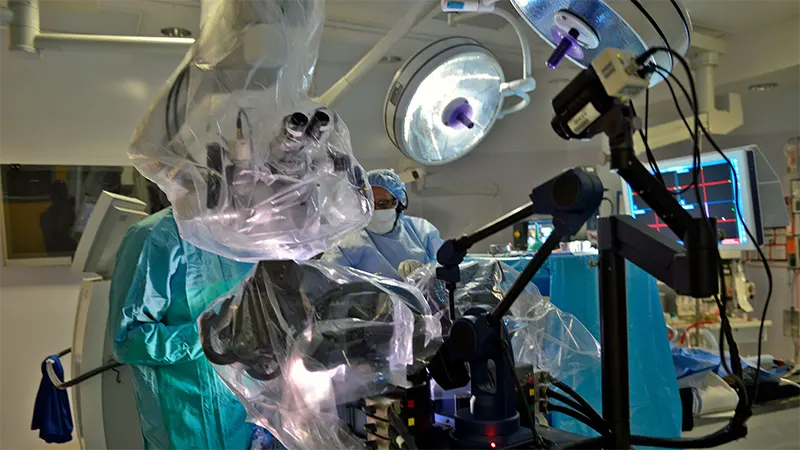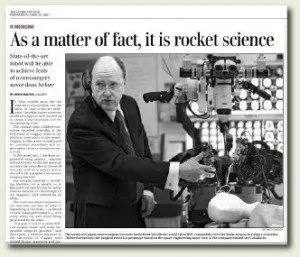
Kanata is Proud to be Part of the neuroArm Project
Kanata Electronic Services is proud to be part of the neuroArm project. Researchers at the University of Calgary unveiled the neuroArm – a new surgical robot they developed with help from the people who built the Canadarm for NASA’s space shuttles.
This robot bears little resemblance to R2-D2 from Star Wars fame, but it does come with high-definition cameras and bright lights. It also has two arms that wield operating tools with the skill of a surgeon.

In 1997, the intraoperative magnetic resonance imaging (iMRI) project was established, with the goal of maximizing safe surgery through enabling MR imaging during the procedure. As moving the MRI was believed to be safer than moving the patient to the magnet, Dr. Garnette Sutherland collaborated with National Research Council, Winnipeg MB (then, Institute for Biodiagnostics IBD) to create the world’s first ceiling mounted iMRI system based on movable high field magnet. The technology, commercialized by IMRIS Inc. (IMRIS-deerfield, MN, USA) now has >75 installations worldwide.
The neuroArm born from the desire to perform precision microsurgery during the acquisition of MR images, became next intuitive innovation/evolution. Dr. Sutherland went on to consolidate collaboration with Macdonald Dettwiler & Associates (MDA) Brampton ON (Celebrated for: Canadarm/Canadarm2/Dextre and now Canadarm3) to create neuroArm, an image-guided MR compatible robot for brain surgery, another world’s first!
Following proof of concept in Winnipeg, the high-field iMRI program was initiated in Calgary. The prototype system was built, tested and used for the first time in neurosurgery on December 4, 1997. A spinoff company designed to distribute the technology, IMRIS Inc., was established in 1997 and the unique technology was patented. In June 2008 the 1.5T iMRI system was decommissioned after participating in over 1000 neurosurgeries. Thanks to additional funding from Alberta Advanced Education and Technology, Western Economic Diversification and from the Calgary Health Trust, the system has been upgraded to a 3.0T magnetic platform- another world-first. It continues to provide unique opportunities for research, training and patient care at the Foothills Medical Centre.
The introduction of MRI to the OR presented a disruption to the rhythm of surgery. Surgery had to be paused while real-time images of the patient’s brain were being acquired. It was at this time when Dr. Garnette Sutherland asked the question, “Wouldn’t it be great if we could continue to operate while images are being taken, in the bore of the magnet…?”
And thus began the trans-Canada unified collaborative enthusiasm to realize neuroArm from concept to a state-of-the-art robot for brain surgery! Once again, thanks to the generous support and trust of Calgary philanthropic community (now expanding across Canada and beyond), leveraged through a large fund raising campaign across the province and nation (Western Economic Diversification and Canada Foundation for Innovation, to name a few), neuroArm came to life – the world’s first image-guided MR compatible robot for microsurgery and stereotaxy, with a proud heritage in space robotics. As MDA began the design and build process shadowing Dr. Sutherland learning about the nuances of surgical finesse and the OR environment, the project spun-off multiple other technological innovations, particulalry in sensor technology, control mechanics, software and communications to name a few.
In addition to bringing neuroArm home to the Foothills Medical Centre, a Calgary-based company neuroArm Surgical Ltd. (later merged with IMRIS Inc.) was created. More importantly, this marked the birth of Project neuroArm, a world class Medical Robotics Program here at the University of Calgary! As only time would tell, for Project neuroArm team, the delivery of neuroArm to the university (2007) and its integration in the OR (2008), Canada’s unique gift and inspiration to the world of surgical robotics, was only a beginning….

